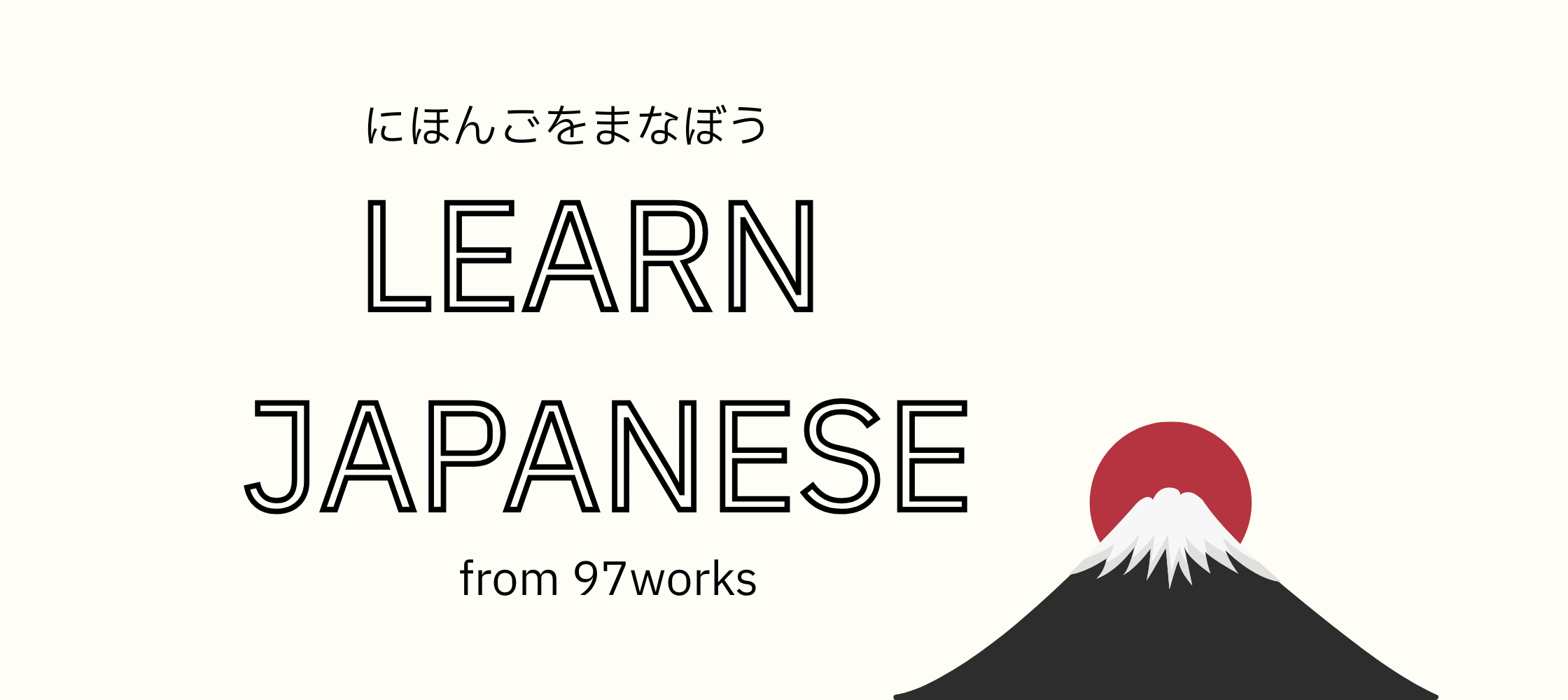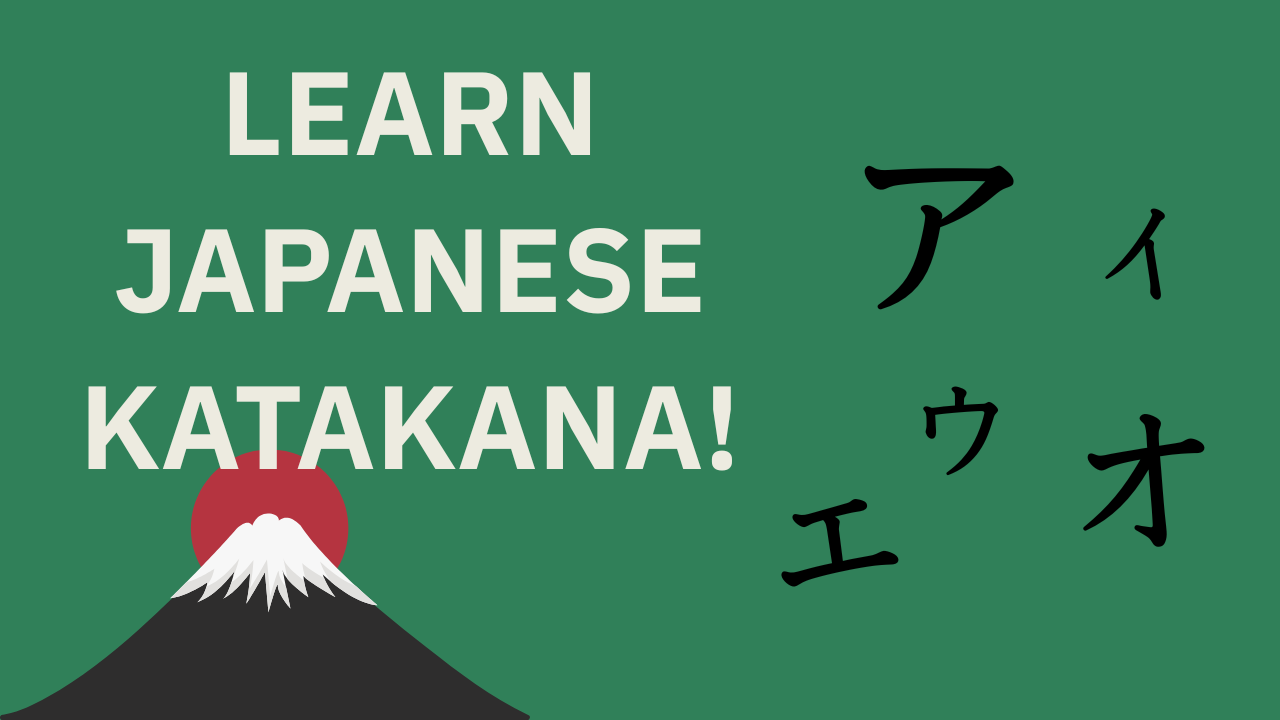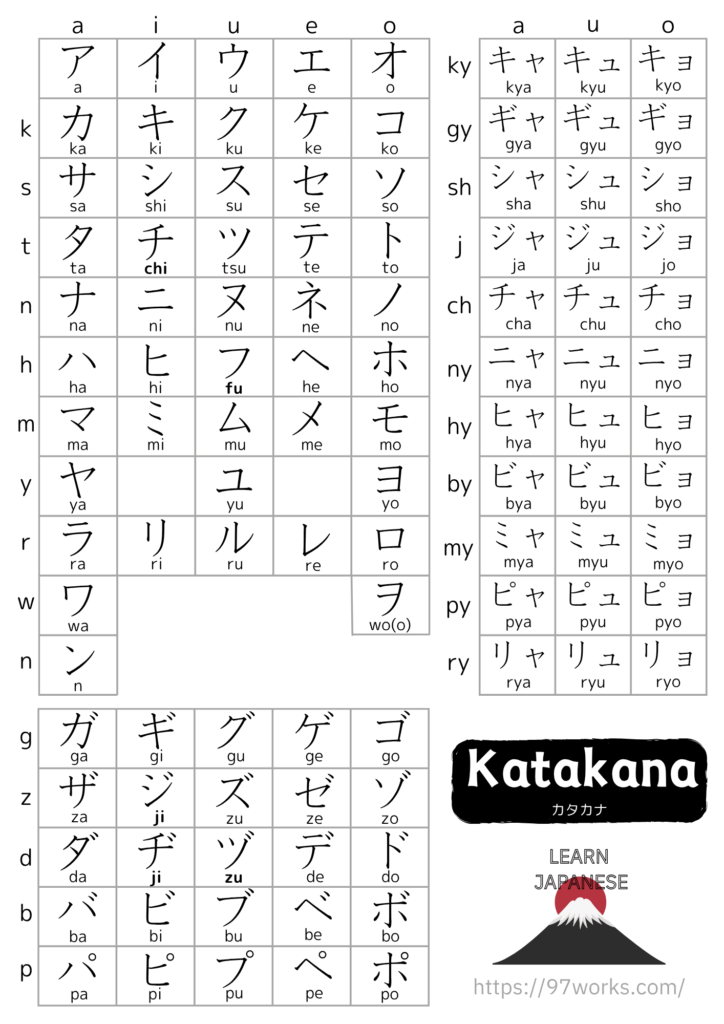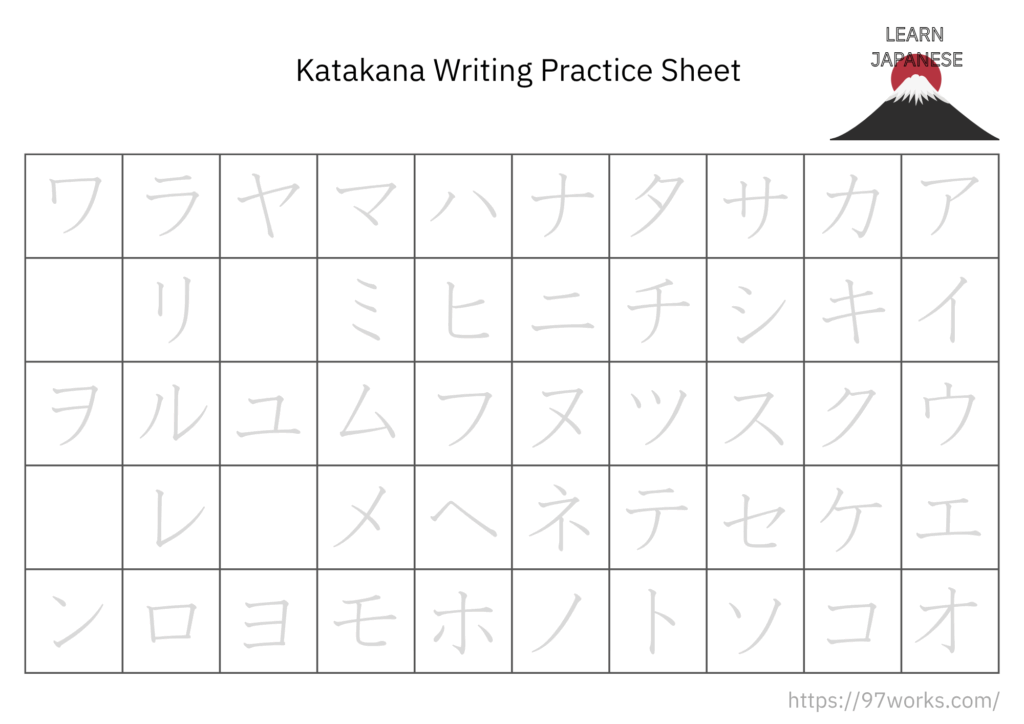When learning Japanese, you’ll soon discover that there are three writing systems: hiragana, katakana, and kanji. In this article, we’ll focus on katakana—what it is, when it’s used, and how you can learn it effectively.
Free printable PDF katakana chart and practice sheet.
Click on the image to open the file!
What Is Katakana?
Katakana is one of the two phonetic alphabets in Japanese, the other being hiragana. Like hiragana, katakana has 46 basic characters, each representing a single sound (syllable).
Examples:
- カ (ka)
- タ (ta)
- サ (sa)
Although katakana characters look more angular and sharp compared to hiragana, they represent the same sounds. The main difference lies in how they are used.
When Is Katakana Used?
Katakana is mainly used for:
- Foreign loanwords:
Example: コンピュータ (konpyuuta – computer) - Foreign names and places:
Example: アメリカ (Amerika – America) - Onomatopoeia (sound effects):
Example: ドキドキ (dokidoki – heartbeat sound) - Emphasis, like italics in English
- Scientific and technical terms (sometimes)
Katakana vs Hiragana and Kanji
Here’s a quick comparison:
- Hiragana: Used for native Japanese words and grammar
- Katakana: Used for foreign or borrowed words
- Kanji: Used for many nouns, verbs, and adjectives with meaning-based characters
While hiragana is used more often, katakana is still essential—especially if you want to read menus, understand advertisements, or recognize foreign terms in Japan.
Conclusion
Katakana may look tricky at first, but it’s a vital part of Japanese writing. By learning both hiragana and katakana, you’ll unlock many more resources and be able to read a wide range of content. Keep practicing, and soon you’ll be reading katakana with confidence!




